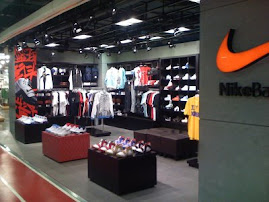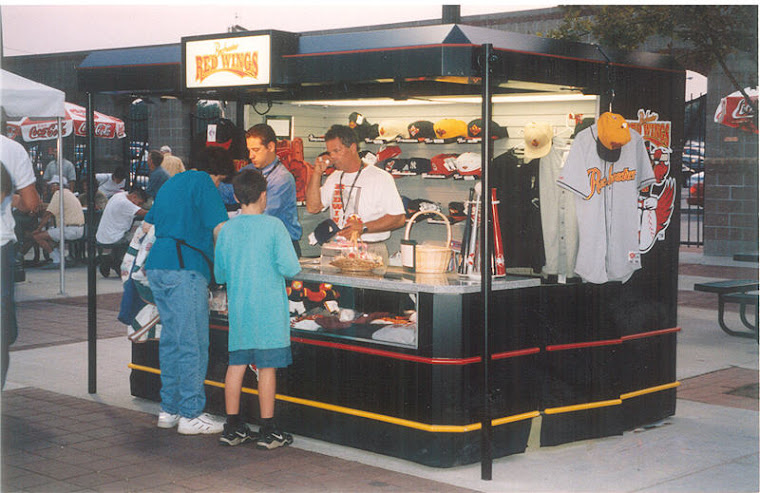 Introduction to Indian Retail Industry:
Introduction to Indian Retail Industry:According to AT Kearney's annual Global Retail Development Index (GRDI), India holds a top most position for the most attractive market for retail investment across the globe and according to industry estimates the industry is estimated to grow from the US$ 330 billion in 2007 to US$ 427 billion by 2010 and US$ 637 billion by 2015. Simultaneously, modern retail is likely to increase its share in the total retail market to 22 per cent by 2010.
India has one of the largest numbers of retail outlets in the world. Of the 12 million retail outlets present in the country, nearly 5 million sell food and related products. Organised retail has increased its share from 5 per cent of total retail sales in 2006 to 8 per cent in 2007. The fastest growing segments have been the wholesale cash and carry stores (150 per cent) followed by supermarkets (100 per cent) and hypermarkets (75-80 per cent). Further, it estimates the organised segment to account for 25 per cent of the total sales by 2011.
The major reasons for this growth is due to large number of young population in the country (around 70% are below the age of 35) , Change in income profiles, Due to high spending and consuming power and increase in working women population etc.
IT – “The Backbone of Retail”Information Technology plays a very important role for the development of retail in the country. IT helps the retailer as well as vendors and suppliers to work effectively and efficiently for their developments. It is estimated that over $2.5 billion will be spent on IT in the Indian retail sector by 2010. This will include the cost of acquiring new assets as well as looking after existing infrastructure. Over 40% of this will be spent on software and services,”
IT Innovation is happening not just at the backend, but also at the customer facing end. It’s taking place all over, right from where the customer enters a store to the point where he leaves. This essentially covers the whole process of buying of products, right from selecting to decision making and paying at the checkout counter. There are lot of applications and packages are available for helping Retail industry, I am going to discuss only the major applications and packages in detail.
List of Applications:• Radio Frequency Identification (RFID) – For Tracking items
• Customer Relationship Management (CRM) software – For building customer loyalty
• Inventory management system – To reduce Shrinkage
• Supply chain management – For Profit maximizing
• Merchandise Management System (MMS) – For Effective merchandise planning
• CCTV systems – To control shoplifters and to count walk in
• E-Retailing – Future Retailing
• M-Retailing – Save your time
Main Advantage of IT use in Retail:• Used for Demand Forecasting
• Easy knowing of Customer preference and their needs
• Reduces risk and cost
• Operational efficiency through better management of supply chain, inventory and store
• Improved productivity through automation, e.g. use of POS
• Enhanced customer experience through use of kiosks, mobile POS, digital signage
• Transparency in business process
• Increased ROI
• Easy tracking of inventory and leakage
• Allows performance management across locations, categories, etc.
List of IT -Retail solutions Providers in India:• Wipro, Infosys and Microsoft for RFID systems
• Sify for ERP, Inventory management
• Qual soft for POS, Warehousing Management, Purchase Order Management, Inventory Management
• Zenith for CRM, SCM and MMS
Radio Frequency Identification (RFID)
RFID stands for Radio Frequency Identification. It is not a new concept. RFID is a system that uses radio waves to transmit an object's identity. There are several methods of identifying objects using RFID, but the most common is to store an ID or serial number that identifies a specific product along with other information, on a tag, which is a small microchip attached to an antenna. The antenna enables the chip to transmit whatever identification information it contains to a reader. The reader converts the radio waves from the RFID tag into digital information that software systems can use for processing.
Typically, when a reader reads a tag, it passes three things to a host computer system: the tag ID, the reader's own ID, and the time the tag was read. By knowing which readers are in which locations, companies can know where a product is, as well as what it is, and by tracking the tag data by time, they can know everywhere it's been. Radio Frequency Identification in the retail industry has solved major problems related to customer services. With the help of RFID it becomes easy for the sales staff to locate a particular item in the store and check its availability in less time.
RFID in Retail helps in the following ways: • Improve security against shoplifting
• Automate product movement, identification and authentication
• Increase speed and efficiency throughout the retail process with fewer errors
• Improve efficiencies for billing, reporting and end of day settlement
• Gain greater control over costly inventory management
• Increases customers loyalty and level of services
• Provide real-time connectivity between production floor and retail floor, thus reduce minimum stock level requirement
• Increase overall labour productivity and decrease overall labour cost
The future of RFID is very bright in retail sector, as right from inventory management to product manufacturing, this system provides a more efficient and advanced retail experience to both the customer and the seller.
Customer Relationship Management (CRM) Software
Customer Relationship Management Software also known as CRM is software that allows a company to manage their relationships with their customers by capturing, analysing, and storage of customer, partner, vendor details and also internal process information.
The key functionality of a CRM system is divided into 3 basic modules these are Marketing, Service and Sales and the 3 aspects of the system are Operational, Collaborative and Analytical (See figure1.0).
The marketing module deals with providing functionality of short term execution of marketing related activities and long term planning within a company.
The service module focuses on how effective the system is of managing customer service which is planned or unplanned. The some of the functions of the Service module are Service Order Management, Resource Planning and Scheduling, Service Level Agreement Management and Planned Services management.
The sales module focuses helping the sales team of the company to manage and execute the pre-sales process, making it more organized. The sales team in most companies are responsible for capturing any leads or opportunities, capturing customer interaction, the CRM helps them process this data and monitor it in the future.
Inventory Management System A powerful inventory management system is the base of the every good retailer. Let’s see in what way this system helps to the retailer in detail.
More Accurate InventoryWith an inventory management system, you can get minors to major’s reports on what you have in stock, on order, and in transit. Retail software with an inventory management system eliminates the guesswork from running your retail business.
Timelier OrderingInventory management systems can be set up to automatically notify you when it's time to order more inventory, such as when stock falls below a prearranged level. By always having your hottest items in stock, you'll be sure to not miss sales due to out-of-stock items. It will even generate purchase orders automatically
Identify What's Hot (And What's Not)An inventory management system tracks which items are selling and which are not. By identifying your less moving items, you can adjust their position, pricing, or other issues earlier. You can also see which items are often purchased in pairs, so you can group them consequently in the store.
Future innovations in Retail:
Smart card Billing:
This is not a new technology for America. The main objective of this technology is to reduce the billing time .In which, each customer will be provided smart card by the respective retail store during customer purchases the goods .The customer just have to insert the smart card in their shopping trolley. This trolley will detect the customer profile which will be controlled by central server of the store.
While customer taking goods and putting into trolley the computer will identify the type, No of items and price of the good and this data will sent to billing counter. If, the customer again taken out goods from trolley the data will again calculate. So, the majority of billing is done by trolley just customer has to put goods in that. While the customer reaching the billing counters the bill will be generated and customer has to pay only money. So, the customer as well as retailer ultimately saves the time.
ConclusionThis are the various applications are used in Indian retailing. Today world is very competitive everyone is running to reach their targets. Since the government policies regarding retailing are liberal, so lot of foreign players like Wal-mart, Tesco, and Carrefour are already planned to enter into our country and many player are decided to come since India is a favourable destination for retail. These players will be well advanced in Technologies. So, this is the major threat for existing organised and unorganised players in the country.
India players like Pantaloons, Spencer’s, Shoppers stop are already adopted various technologies to compete with new players. So, my kind advice to existing and new players in both organised and unorganised has to implement Information Technology in their business to avoid loss and risk.
R.Muthukrishnan
muthupearl10@gmail.com























